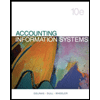
Cash Equivalents:
Cash equivalents are part of liquid investments. It includes marketable securities, physical cash and commercial paper.
Cash Flow:
Cash flow is a statement which shows flow of cash and cash equivalents as moving inward and outward of the business in a given time. In other words, cash flow statement shows cash generated or used by a company.
Inventory:
Inventory is an asset of the company which includes three types of goods: work in progress, raw material and finished goods which are in the process of making or already ready to be sold in the market. In other words inventory is goods which are unsold and would be sold.
1.
To identify: Total amount of cash and cash equivalents and its percentage in reference of total current assets, total current liabilities, total shareholder’s equity and total assets for 2015 and 2017.
Explanation of Solution
Balance of cash and cash equivalents as on September26, 2014and 2015 are as follows:
| Particulars | Balance as on September26, 2015($) | % of cash and cash equivalents(%) | Balance as on September27, 2014($) | % of cash and cash equivalents(%) |
| Cash and its equivalents | 21,120 | 13,844 | ||
| Current Assets | 89,378 | 23.6 | 68,531 | 20.2 |
| Current Liabilities | 80,610 | 26.2 | 63,448 | 21.8 |
| Shareholder’s Equity | 119,355 | 17.7 | 111,547 | 12.4 |
| Net Assets | 290,479 | 7.3 | 231,839 | 6.0 |
Table (1)
Review of trend:
From above data, it is observed that cash and cash equivalents have increased in 2017 as compared to 2016.
Hence, it is ascertained that liquidity position of A Company has increased slightly as compared to last year .
Working notes:
Formula to calculate % of cash and cash equivalent is,
Percent of cash and cash equivalents on September 26, 2015 proportionate to:
Calculation of current assets %,
Calculation of current liabilities %,
Calculation of shareholder’s equity %,
Calculation of net assets %,
Percent of cash and cash equivalents on September 27, 2014 proportionate to:
Calculation of current assets %,
Calculation of current liabilities %,
Calculation of shareholder’s equity %,
Calculation of net assets %,
2.
Cash and cash equivalents percentage change in the beginning and ending of the year through the information contained in cash flow statement of September26, 2015 and September27, 2014.
2.
Explanation of Solution
Formula to calculate the percentage change in cash and cash equivalents is,
2015
Given,
Cash and cash equivalents in the beginning of 2015 is $13,844.
Cash and cash equivalents at the end of the year is $21,120.
Substitute $13,844 for cash and cash equivalents in the beginning of the 2015 and $21,120 at the end of the year.
Hence, percentage change represents an increase of 52.6%.
2014
Given,
Cash and cash equivalents in the beginning of 2014 is $14,259
Cash and cash equivalents at the end of the year is $13,844.
Substitute $14,259 for cash and cash equivalents in the beginning of the 2015 and $13,844 at the end of the year.
Hence, percentage change represents a decrease of 2.9%.
3.
Day’s sales uncollected as of September26, 2015 and September27, 2014.
3.
Explanation of Solution
Day’s sales uncollected imply how much days a company takes to collect its accounts receivables.
Formula to calculate day’s sales uncollected is,
2015
Given,
Net sales are $233,715.
Substitute $16,849 for accounts receivable, and $233,715 for net sales.
2014
Given,
Accounts receivable is $17,460.
Net sales are $182,795.
Substitute $17,460 for accounts receivable, and $182,795 for net sales.
Hence, day’s sales uncollected are accounted for 2014 is 34.86 days and for 2015 is 26.31 days.
- Thus, it is concluded that A Company has improved slightly in order to collect its receivable as now it would take 8.55 less days to collect receivables.
- Accounts receivables are important part of the company as it indicates about the turnover. So, company should take steps for its improvements.
4.
Day’s sales uncollected as of September26, 2015.
4.
Explanation of Solution
Day’s sales uncollected imply how much days a company takes to collect its accounts receivables.
Given info,
Accounts receivable is $16,849
Net sales are $233,715.
Formula to calculate day’s sales uncollected is,
Substitute $16,849 for accounts receivable and $233,715 for net sales.
Hence, day’s sales uncollected are accounted for 26.31 days .
Thus, company would take 8.55 more days to collect its receivables in the year 2015 as compared to 2014.
Want to see more full solutions like this?
Chapter 6 Solutions
Gen Combo Ll Financial Accounting Fundamentals; Connect Access Card
- Southern Company pays its employees weekly by issuing checks on its regular bank account. The owner thinks it would be too much trouble to have a second checking account. Explain to the owner why having this account might be worth the additional effort.arrow_forwardOn May 2 Kellie Company has decided to initiate a petty cash fund in the amount of $1,200. Prepare journal entries for the following transactions: A. On July 5, the petty cash fund needed replenishment, and the following are the receipts: Auto Expense $125, Supplies $368, Postage Expense $325, Repairs and Maintenance Expense $99, Miscellaneous Expense $259. The cash on hand at this time was $38. B. On June 14, the petty cash fund needed replenishment, and the following are the receipts: Auto Expense $425, Supplies $95, Postage Expense $240, Repairs and Maintenance Expense $299, Miscellaneous Expense $77. The cash on hand at this time was $80. C. On June 23, the petty cash fund needed replenishment, and the following are the receipts: Auto Expense $251, Supplies $188, Postage Expense $263, Repairs and Maintenance Expense $182, Miscellaneous Expense $203. The cash on hand at this time was $93. D. On June 29, the company determined that the petty cash fund needed to be decreased to $1,000. E. On June 30, the petty cash fund needed replenishment as it was month-end. The following are the receipts: Auto Expense $114, Supplies $75, Postage Expense $50, Repairs and Maintenance Expense $121, Miscellaneous Expense $39. The cash on hand at this time was $603.arrow_forwardOn September 1, French company has decided to initiate a petty cash fund in the amount of $800. Prepare journal entries for the following transactions: A. On September 5, the petty cash fund needed replenishment, and the following are the receipts: Auto Expense $37, Supplies $124, Postage Expense $270, Repairs and Maintenance Expense $168, Miscellaneous Expense $149. The cash on hand at this time was $48. B. On September 14, the petty cash fund needed replenishment and the following are the receipts: Auto Expense $18, Supplies $175, Postage Expense $50, Repairs and Maintenance Expense $269, Miscellaneous Expense $59. The cash on hand at this time was $210. C. On September 23, the petty cash fund needed replenishment and the following are the receipts: Auto Expense $251, Supplies $88, Postage Expense $63, Repairs and Maintenance Expense $182, Miscellaneous Expense $203. The cash on hand at this time was $20. D. On September 29, the company determined that the petty cash fund needed to be increased to $1,000. E. On September 30, the petty cash fund needed replenishment as it was month end. The following are the receipts: Auto Expense $18, Supplies $15, Postage Expense $57, Repairs and Maintenance Expense $49, Miscellaneous Expense $29. The cash on hand at this time was $837.arrow_forward
- Lena, Carrie, and Margaret work for a family physician. The doctor is knowledgeable about office management practices and has segregated the cash receipt duties as follows: Lena opens the mail and prepares a triplicate list of money received. Lena sends one copy of the list to Carrie, the cashier, who deposits the receipts daily in the bank. Margaret, the recordkeeper, receives a copy of the list and posts payments to the patients' accounts. About once a month, the office clerks have an expensive lunch they pay for as follows. First Carrie endorses a patient's check in the doctor's name and cashes it at the bank. Lena then destroys the remittance advice accompanying the check. Finally, Margaret posts payment to the customer's account as a miscellaneous credit. The three justify their actions by their relatively low pay and knowledge that the doctor will likely never miss the money. What went wrong with the doctor's internal controls?arrow_forwardA small branch of Avon Cosmetics in Tuao, employs Amelia Rodriquez as Branch Manager and Mary Gonzales as her sales assistant. The Branch uses a bank account in Tuao, to pay for expenses in the name of Avon Cosmetics-Special Account. To pay expenses, checks must be signed by Amelia Rodriquez or John Dee, the treasurer of Avon Cosmetics. Amelia receives the cancelled checks and bank statements in her records. She also periodically prepares reports of cash disbursements and sends them to the home office in Makati. Required: Identify the weakness /weaknesses in internal control and opposite the identified weakness/weaknesses, enumerate the control procedures that you will recommend to avoid or mitigate the risk of loss.arrow_forwardFollowing are five separate cases involving internal control issues. a. Chi Han receives all incoming customer cash receipts for her employer and posts the customer payments to their respective accounts. b. At Tico Company, Julia and Trevor alternate lunch hours. Julia is the petty cash custodian, but if someone needs petty cash when she is at lunch, Trevor fills in as custodian. c. Nori Nozumi posts all patient charges and payments at the Hopeville Medical Clinic. Each night Nori backs up the computerized accounting system but does not password lock her computer. d. Ben Shales prides himself on hiring quality workers who require little supervision. As office manager, Ben gives his employees full discretion over their tasks and for years has seen no reason to perform independent reviews of their work. e. Carla Farah’s manager has told her to reduce costs. Carla decides to raise the deductible on the plant’s property insurance from $5,000 to $10,000. This cuts the property insurance…arrow_forward
 Financial Accounting: The Impact on Decision Make...AccountingISBN:9781305654174Author:Gary A. Porter, Curtis L. NortonPublisher:Cengage Learning
Financial Accounting: The Impact on Decision Make...AccountingISBN:9781305654174Author:Gary A. Porter, Curtis L. NortonPublisher:Cengage Learning Auditing: A Risk Based-Approach to Conducting a Q...AccountingISBN:9781305080577Author:Karla M Johnstone, Audrey A. Gramling, Larry E. RittenbergPublisher:South-Western College Pub
Auditing: A Risk Based-Approach to Conducting a Q...AccountingISBN:9781305080577Author:Karla M Johnstone, Audrey A. Gramling, Larry E. RittenbergPublisher:South-Western College Pub Auditing: A Risk Based-Approach (MindTap Course L...AccountingISBN:9781337619455Author:Karla M Johnstone, Audrey A. Gramling, Larry E. RittenbergPublisher:Cengage Learning
Auditing: A Risk Based-Approach (MindTap Course L...AccountingISBN:9781337619455Author:Karla M Johnstone, Audrey A. Gramling, Larry E. RittenbergPublisher:Cengage Learning Pkg Acc Infor Systems MS VISIO CDFinanceISBN:9781133935940Author:Ulric J. GelinasPublisher:CENGAGE LCentury 21 Accounting Multicolumn JournalAccountingISBN:9781337679503Author:GilbertsonPublisher:Cengage
Pkg Acc Infor Systems MS VISIO CDFinanceISBN:9781133935940Author:Ulric J. GelinasPublisher:CENGAGE LCentury 21 Accounting Multicolumn JournalAccountingISBN:9781337679503Author:GilbertsonPublisher:Cengage





